
Waupaca County is a county in the U.S. state of Wisconsin. As of the 2020 census, the population was 51,812. The county seat is Waupaca. The county was created in 1851 and organized in 1853. It is named after the Waupaca River, a Menominee language name meaning 'white sand bottom', 'pale water', or 'tomorrow river'.

Portage County is a county in the U.S. state of Wisconsin. As of the 2020 census, the population was 70,377. Its county seat is Stevens Point.

Buffalo City is a city in Buffalo County in the U.S. state of Wisconsin. The population was 1,023 at the 2010 census.

Schofield is a city in Marathon County, Wisconsin, United States. It is part of the Wausau, Wisconsin Metropolitan Statistical Area. The population was 2,157 at the 2020 census. The city was named for William Scholfield, who came to the area in the 1851 to open a sawmill. The city has since dropped the "L" from its name.

Tigerton is a village in Shawano County, Wisconsin, United States. The population was 741 at the 2010 census.

Big Falls is a village in Waupaca County, Wisconsin, United States. The population was 61 at the 2010 census.

Caledonia is a town in Waupaca County, Wisconsin, United States. The population was 1,712 at the 2020 census. The unincorporated communities of North Readfield and Readfield are located in the town.
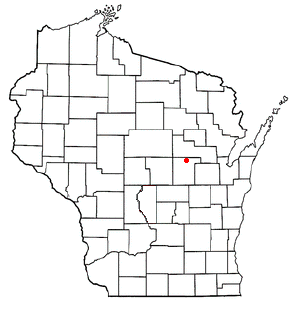
Dupont is a town in Waupaca County, Wisconsin, United States. The population was 741 at the 2000 census.

Embarrass is a village in Waupaca County, Wisconsin, United States. The population was 404 at the 2010 census.

Helvetia is a town in Waupaca County, Wisconsin, in the United States. As of the 2000 census, the town population was 649.
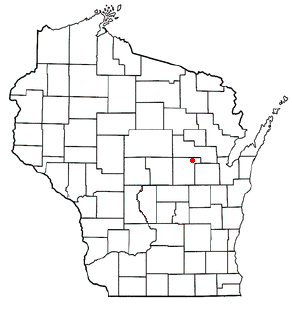
Larrabee is a town in Waupaca County, Wisconsin, United States. The population was 1,301 at the 2000 census. The unincorporated community of Buckbee is located in the town.

Lind is a town in Waupaca County, Wisconsin, United States. The population was 1,381 at the 2000 census and 1,585 in 2018. The unincorporated community of Lind Center and the ghost town of Hatton are located in the town.
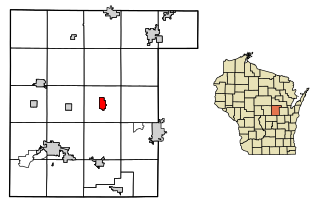
Manawa is a city in Waupaca County, Wisconsin, United States. The population was 1,441 at the 2020 census.
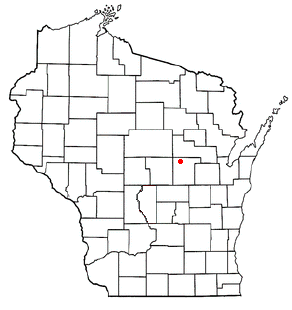
Wyoming is a town in Waupaca County, Wisconsin, United States. The population was 285 at the 2000 census. The ghost town of Granite City was located in the town.

Delafield is a city in Waukesha County, Wisconsin, along the Bark River. The population was 7,085 at the 2010 census.
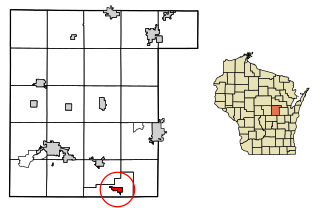
Fremont is a village in Waupaca County, Wisconsin, United States. It is surrounded by Town of Fremont. The population was 679 at the 2010 census. Fremont has been referred to as the "White Bass Capital of the World."
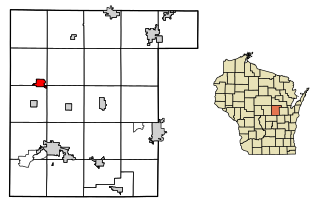
Iola is a village in Waupaca County, Wisconsin, United States. The population was 1,236 at the 2020 census. The village is bordered by the towns of Iola and Scandinavia. The community was named after a Potawatomi girl.

Scandinavia is a village in the Town of Scandinavia in Waupaca County, Wisconsin, United States. The population was 328 at the 2010 census.

Waupaca is a town in Waupaca County, Wisconsin, United States. The population was 1,155 at the 2000 census. The City of Waupaca is located mostly within the town, though it is politically independent. The ghost town of Granite Quarry was also located partially in the town.
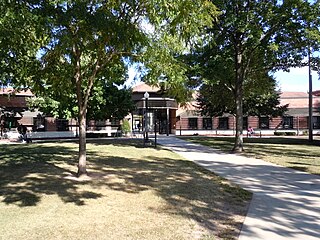
Waupaca is a city in and the county seat of Waupaca County in the U.S. state of Wisconsin. The population was 6,282 at the 2020 census.

























